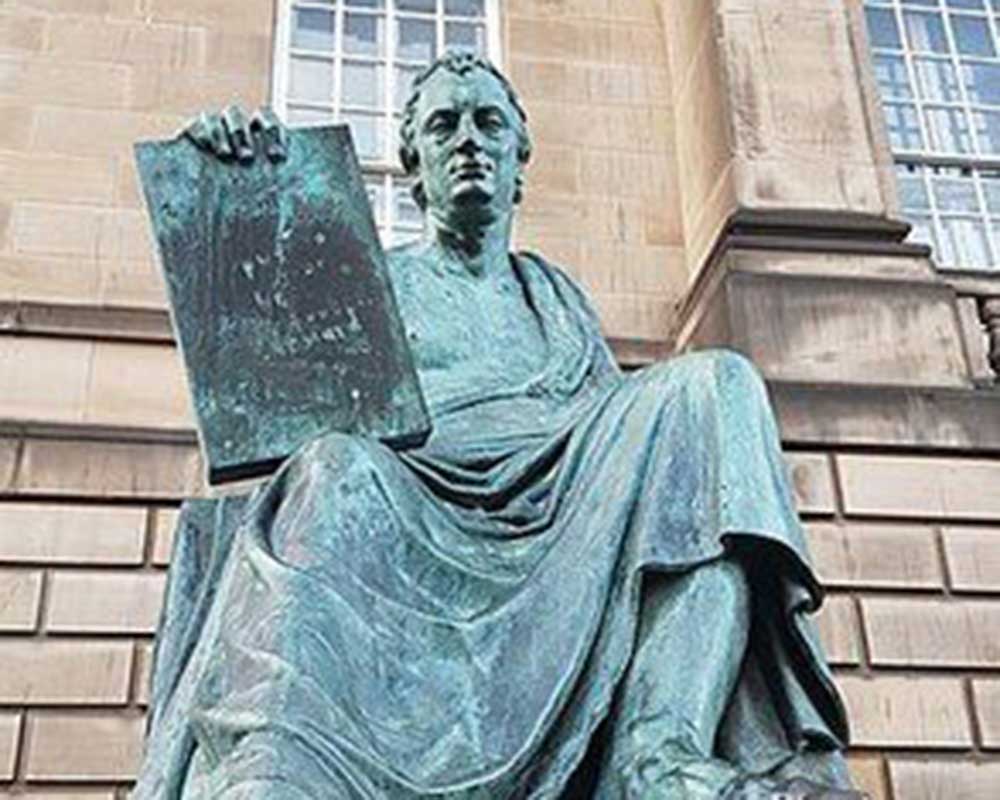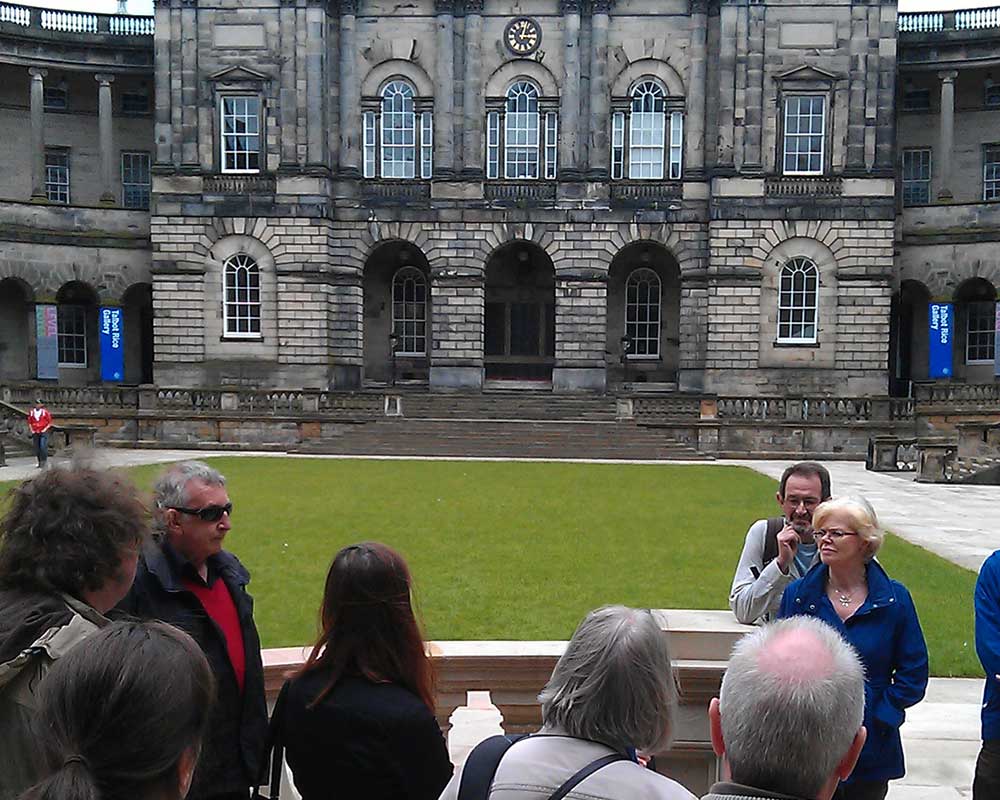Walking Tour Edinburgh
David Hume is arguably one of the modern world’s greatest philosophers, best known for his highly influential system of philosophical empiricism, scepticism, and Naturalism. One great benefit of this Walking Tour is that you get to massage his toe, on his statue, which, we are told by Scottish mystics, imparts great philosophical knowledge and wisdom to the masseur (don’t do it for too long though in case passers-by think you are a bit weird). The toe is already rubbed down to shiny bronze, which no doubt explains Scotland’s ongoing intellectual heritage.
Hume was an ardent atheist, not easy for him at a time of Scottish religious zealotry. A tale from Hume’s personal letters is that, one day, when he fell into a deep bog while walking home he shouted for help and an elderly lady appeared who recognised him as David Hume the atheist. She refused to help extricate him from the mud until he recited the Lord’s prayer. Hume begged her “does your religion not teach you to help others?” She replied, “That may well be but ye’ shall na’ get oot o’ that till ye become Christian yersel’. To her amazement he recited the Lord’s prayer and committed, maybe a wee bit ingenuously, to become a Christian.

Despite their small size, Scottish Universities were International Centres of Learning and drew students from across Protestant Europe as well as England and Ulster. (Only Episcopalians, derived from the English/Anglican Protestant Church, could attend Oxford or Cambridge or Trinity College in Dublin).
Edinburgh was a leading European Centre of anatomical study in the early 19th Century, partly due to Catholic Europe’s ban on dissection. This of course led to a tremendous advance in Scottish medicine. As a result, the demand for cadavers led to a shortfall in supply. Scottish Law required that corpses used for medical research should only come from those who had died in prison, suicide victims, or from foundlings and orphans.
The shortage of corpses led to an increase in body snatching by what were known as “resurrection men”. Measures to ensure that graves were left untouched, such as the use of mortsafes, exacerbated the problem. So much so that people were murdered because, to the murderers, they were worth a lot more dead than alive. The Burke and Hare murders were a series of 16 killings committed over a period of around 10 months in 1828 in Edinburgh. They were undertaken by William Burke and William Hare, who sold the corpses to Robert Knox for dissection at his anatomy lectures, in return for a payment of over £7.
